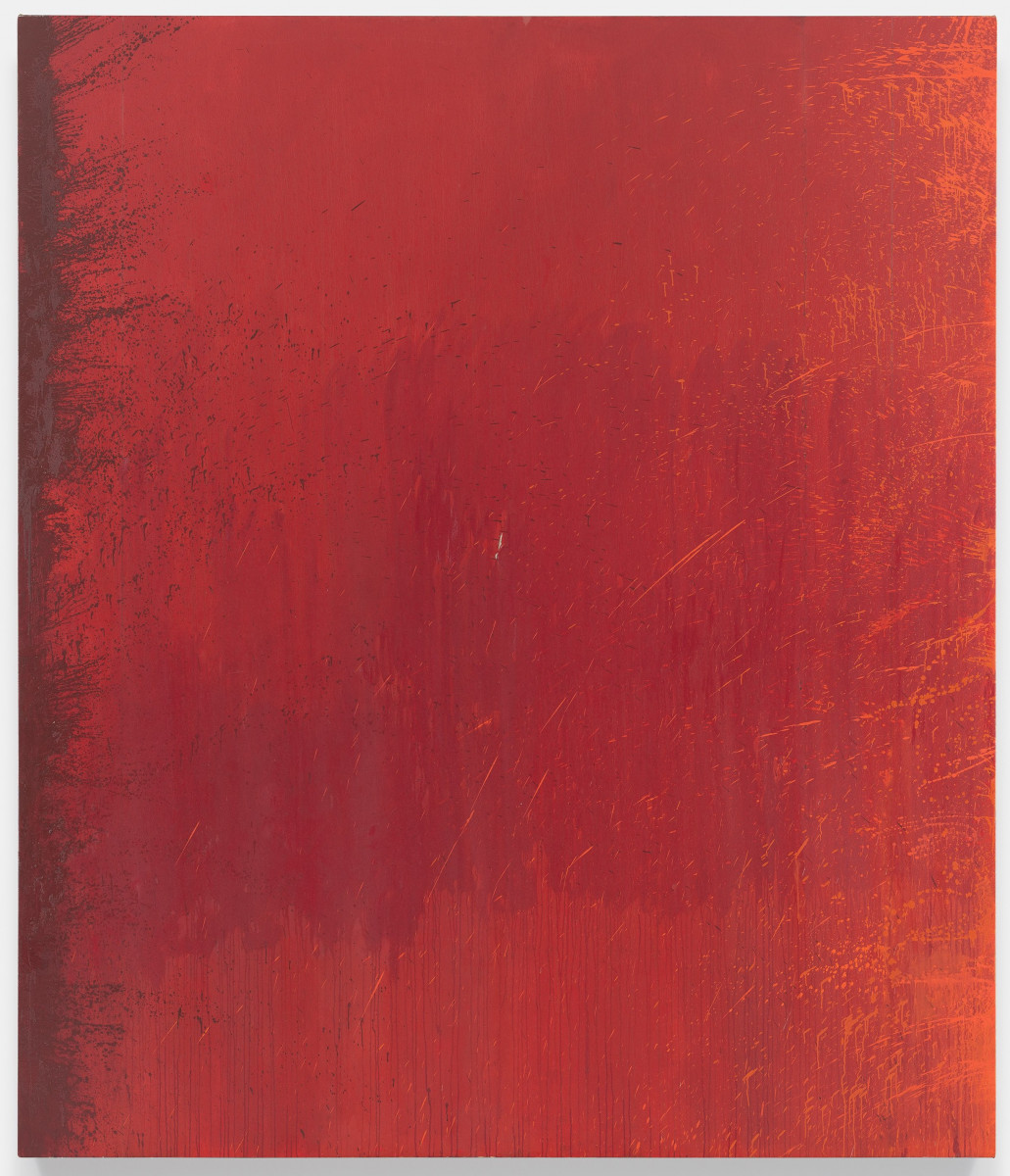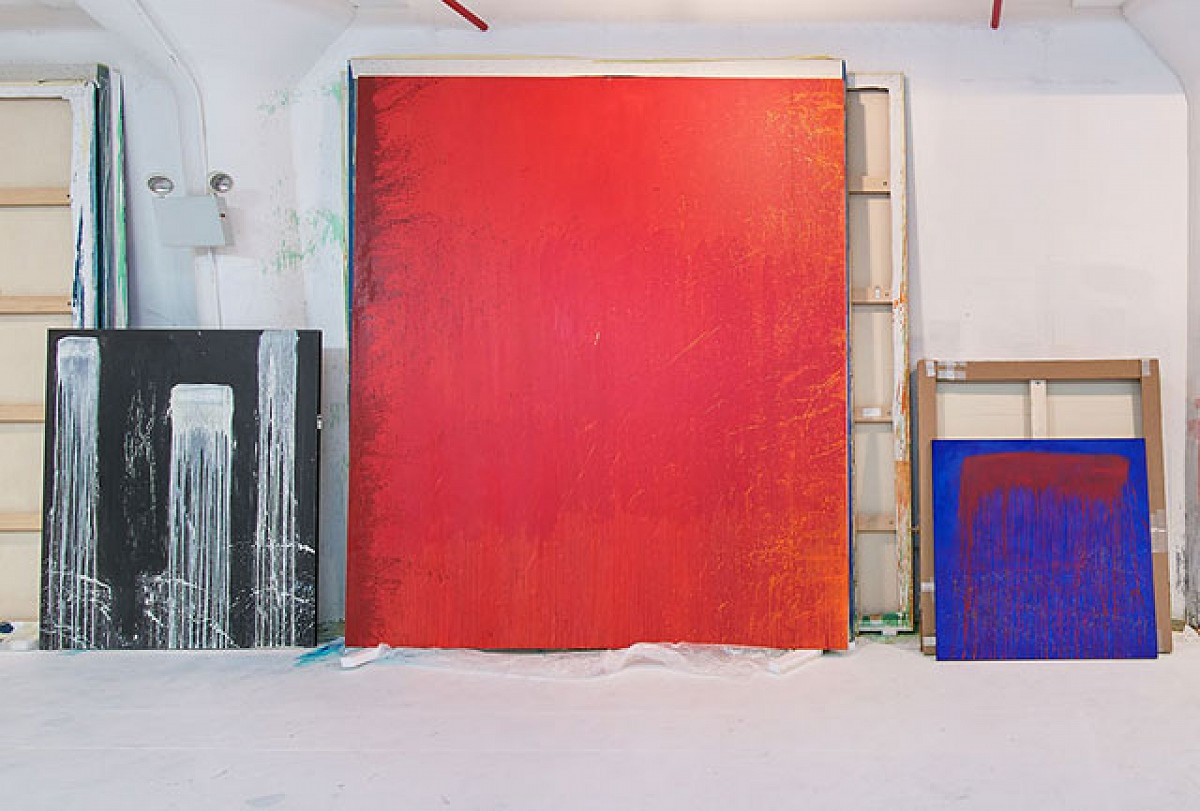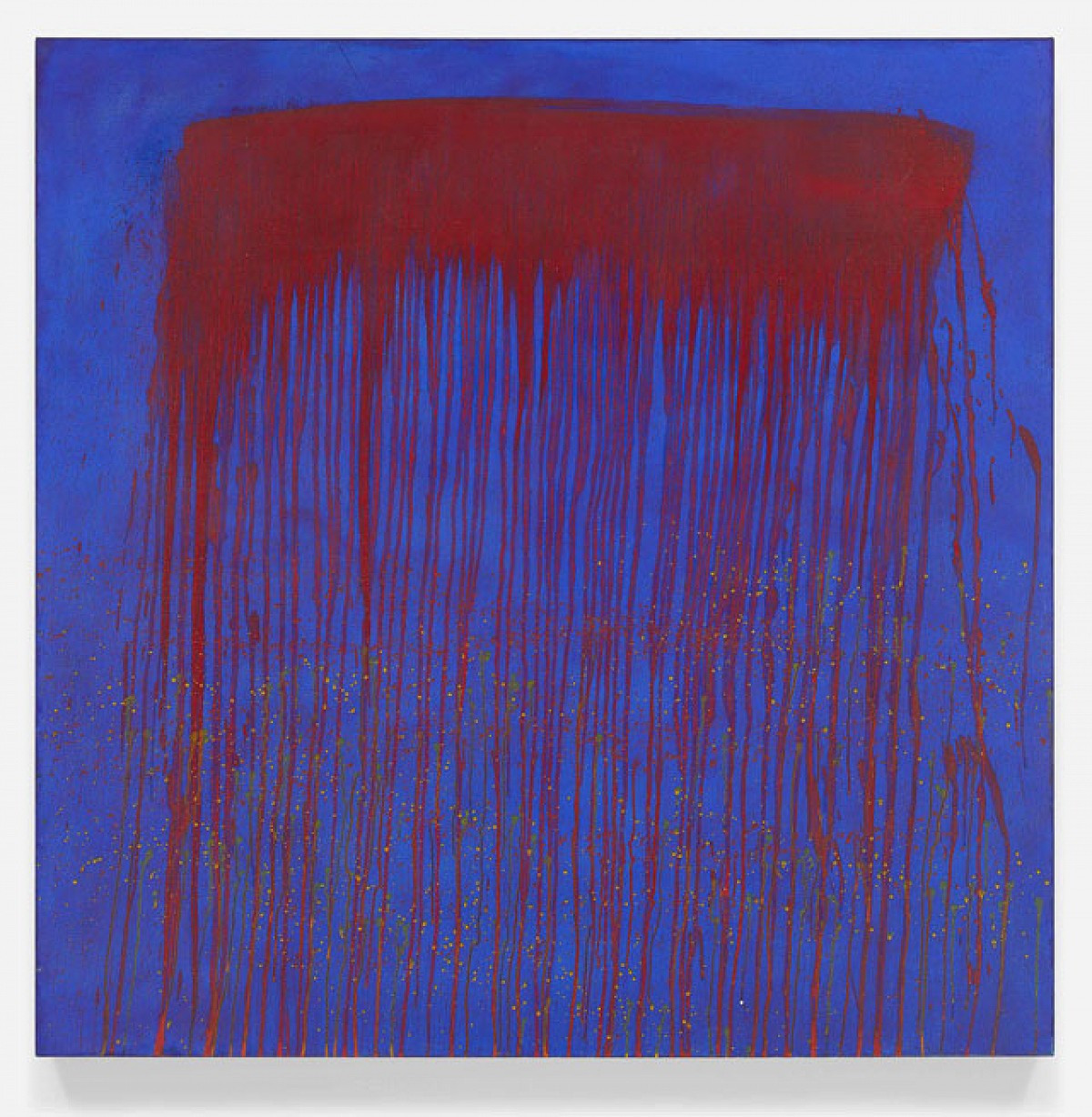Pat Steir
Published: September, 2019, "You, Me and Art. Artists in the 21st Century."
Marta Gnyp: You were studying art during the ’60s, when the age of abstract expressionism in the USA had come to its end; conceptual and minimal art were taking shape, simultaneously with pop art.
Pat Steir: Painting was problematic but this didn’t mean anything to me. On the contrary, it got more interesting because it was less accepted.
MG: Was it difficult to survive in the art world then, when painting was out of fashion?
PS: So what? I’ve lived on my works since 1975, which means that people have always liked paintings. Many conceptual artists were my friends. I have always liked minimalism; they were my friends too. They were actually more popular in Europe than in the USA. In America, painting has never lost its audience.
MG: Did you have fights with the other artists about the direction of art?
PS: (laughs) I was living with the inventor of conceptual art (Sol LeWitt). It couldn’t bother me at all. He was very supportive of painting, by the way.
VIBRATING BLUE AND RED WATERFALL, 1993
MG: The term of ‘conceptual art’ is misleading because it implicates that the other art is not conceptual.
PS: Exactly. I wanted to do it all by myself. I was interested in ideas, not the limitations imposed from outside. A lot of my earlier works are conceptual art if, for example, you take the line as the concept. I think there is a misunderstanding as to what conceptual art was, especially in the second and third generation.
MG: There were two artists that you mentioned as essential for formulating your artistic thinking; one was John Cage, the other Agnes Martin.
PS: Yes, in two different ways. John Cage used the notion of chaos to make his work. Duchamp said anything could be art. John said everything is art. I thought I would use gravity as a very simple element to motor my work. What matters is not only the concept, but also the intention. I was making the concept as simple as possible.
MG: If everything is art how do you see yourself as artist?
PS: I was impressed by the ideas of John. They were very meaningful to me.
MG: The other person that was important for your artistic thinking was Agnes Martin. What was so interesting between the two of you?
PS: Everything. She was such a good artist. She had to make art, and she made art everyday until she died, with the exception of the last few months of her life. She made very simple, deep works. I admired her desire to make art and the way she did it.
MG: How did you meet?
PS: My friend Douglas Crimp (the curator and art critic) curated a Martin show and invited me to join him visiting Agnes. He knew Agnes because he did the show with her when her work was not well known. I think it was in 1971; since then, I visited her every year.
MG: She was much older than you were.
PS: Much older. She became my teacher, in a way. She didn’t teach me how to make work, but she did teach me how to make art from the heart. She was very special.
MG: You also knew Louise Bourgeois well — was she someone you could talk to about your art?
PS: I didn’t understand her work. I interviewed her three times, until I wrote about the parallels between her life and her work. We both loved the last interview. She had a caretaker reading it to her every night again and again. At last, I understood what she did. It didn’t attract me though; it turned me away. I can’t say she was my favorite artist in the world, but it has meaning.
MG: Who, then, is your favorite artist?
PS: Back to Agnes Martin. I can’t say exactly why. The work is so incredibly moving. There is something about hesitation and freedom.
MG: Emotions and freedom are values that are very hard to talk about nowadays without being cheesy.
PS: We are living in difficult times. Things always change; this will change too. It is better not to change yourself to fit in. Now I don’t know what the values are. I live in America; Trump makes me feel sick. What are our values among artists and art? The audience’s value, the critical value, the personal value – somehow they don’t fit together at all.
MG: You seem to like the concept of beauty, which is not so popular at this moment, either.
PS: I don’t do works that are popular and I don’t care. Yes, it is important to me that the work is beautiful. It is beautiful because I make it natural. I’ve never had the idea that I want to create beauty, not even now. I’m not manipulating the paint; when I’m painting, the gravity comes into action and sometimes they become beautiful. I allow nature to paint the painting.
MG: Would you agree with the opinion that your works relate to nature?
PS: My works do relate to nature, but to the grand nature, not small nature. When I paint waterfalls, the waterfall actually paints itself because of the gravity. I have more interest in a large extensive nature.
MG: Did you start out with this concept or did it come later as an explanation of what you were doing?
PS: I started with this idea. I wanted the paintings to paint themselves. By the way, I’m not interested in abstraction, but in a painting that is making an image on its own.
MG: Do you create a situation in which the painting can happen?
PS: I make it happen. Firstly, I’m creating it using my hands. Secondly, people feel my love there. I can’t explain that. I know that this is very romantic and romantics are not very much in style. But who cares what’s in style? You have to make your own style.
MG: Could you tell me something about the process of painting?
PS: The waterfalls were very fast because everything till 2002 had one layer. Now the process is very slow because the paintings have many layers. They are oil painted; they dry slowly.
MG: Lets speak about your first dripping paintings.
PS: I don’t call them drippings; I call them falls. I started to paint them somewhere around 1989. The first one I did hangs in the Metropolitan Museum right now.
MG: Was it for you a revelation when you started to paint the falls; when you found out your very specific language?
PS: It seemed that way. But I stress the word ‘seem’. I’m not the kind of artist that tries to represent myself. I just make art.
MG: But you developed your own signature.
PS: I became an artist to be free. I didn’t make any effort to fit in because I don’t care about it. I don’t care about being something according to the rules of the art society. I was searching for something that was relevant to me in painting which I cannot describe with words. This is why I’m an artist.
MG: Do you consider yourself as a part of a bigger painting tradition? You mentioned, for example, romanticism; sometimes your work is also placed in the context of abstract expressionism.
PS: I don’t like the term ‘expressionism’ because I don’t want to express anything. I let things be themselves. If you want to express yourself, you should see a therapist. ‘Postmodern art’ fits my work the best, except that I don’t think that there is any art that is postmodern.
MG: Do you consider your art spiritual then?
PS: This sounds more familiar. If you call meditation a spiritual practice, then yes.
MG: What about the connection of your work to Asia. Is it true that you implement Zen Buddhism ideas in your work?
PS: I saw the Chinese landscape paintings with monks on the ground, as if they were trying to make the audience for my own paintings. I worked several times in China and in Japan. I saw a lot of calligraphy in person, visited many Chinese paintings. I made woodcuts in China and Japan.
MG: If you look at your artistic work from the ’60s till today, you worked through so many different trends, movements and fashions. How did you react to all these changes?
PS: I like Cindy Sherman’s work, Sherrie Levine’s work, Lawrence Weiner’s work. Jo Baer’s work, Robert Ryman’s work; many others too. When I like their work, it doesn’t mean that I have to adopt myself to their philosophy.
MG: Has the artistic community changed?
PS: In the ’70s, there was more like one community; there were not so many artists and people exchanged among each other. Nobody disliked anybody really, you could argue, but that was it. In the ’80s, it started to change, but still, whatever the other artists’ identity was, we were also friends. I’m friends with Sherrie and Cindy; I admire their work and I’m sure they accept my work too. I’m a very close friend to Lawrence Weiner, who has been very supportive of my work.
MG: The situation has changed for you. You are getting a lot of attention nowadays. Do you enjoy it?
PS: Of course (laughs). I love my new gallery very much. They are fantastic; they are interested in very broad range of art and they are wonderful supporters of my paintings. The visibility of the works blossoms under their care.
MG: It must be a great feeling for you to see recognition for your work that is also expressed in the prices.
PS: It is, it means that people who are buying it are not going to trade it. They are using it for themselves. When people pay more they are going to keep it rather than selling it.
MG: If you look at the forty years that your oeuvre spans, what is the biggest change in the art world?
PS: It changes every eight to ten years. What I see at this moment is that younger artists are puzzled. Art is a reflection of the society we live in, whatever you make. Today, we live in what seems to be chaos. I see that youngest artists don’t know where to turn. They think that you are a successful artist because you are selling works.
MG: You were also a teacher?
PS: I taught art at CAL arts; several artists that I taught later became world famous.
MG: Why is art important to make?
PS: It is important to make art because art is what we leave behind to tell our story.

